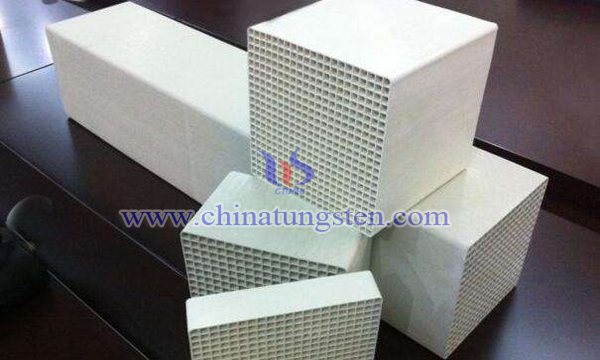Tungsten Acidified Zirconia Denitrification Catalyst
- Details
- Category: Tungsten Information
- Published on Sunday, 25 August 2019 14:47
Biomass combustion is considered as one of the alternatives to fossil fuels, which can reduce carbon dioxide emissions. In the world, many countries have put forward clear objectives for the development of biomass fuels. According to the medium and long-term development plan of renewable energy in China, by 2020, the total installed capacity of biomass power generation will reach 30 million kilowatts, and the annual utilization of biomass solid briquette fuel will reach 50 million tons. Biomass combustion will inevitably produce nitrogen oxides (NOx), which will cause environmental pollution.

Cement industry is an important basic industry in China, but it is also a key industry of nitrogen oxide control. In 2010, the national cement industry's NOx emissions accounted for about 10% of the total emissions of NOx industrial sources in China. It has become the third largest fixed emission source after power plant boilers and industrial boilers. The emission of NOx has become a restrictive factor for the sustainable development of cement industry.
The preparation method of the tungsten acidified zirconia denitrification catalyst comprises the following steps:
(1)The precursor solution of zirconium and tungsten was prepared by dissolving the precursor of zirconium and tungsten in water, then adding ammonia to the precursor solution, adjusting the pH value of the solution to 8-9, stirring for 2-6 hours, and then standing for 2-48 hours.
(2)Steps (1) After the reaction liquid is filtered, the precipitate is taken out and dried at 60-120 ℃, then calcined at 400-800 ℃ for 2-12 h to prepare zirconia tungstate acidification, and finally grinded to powder.
(3) Dissolve vanadium precursor with saturated oxalic acid solution, dissolve cerium precursor with water, and then mix the two solutions to obtain precursor mixed solution; then add the powder of zirconium tungstate acidified by step (2) into precursor mixed solution, mix and impregnate for 2-48 hours, dried at 60-120 ℃, and then dried at 400-800 ℃. The denitrification catalyst supported on zirconia tungstate acidification is obtained by calcination at 2 - 12 h.
Zirconia has good thermal stability and mechanical properties, but its acidity is weak. Zirconia with tungsten acidification has strong acidity, which can slow down the destruction of acid sites of catalysts by alkali metals and alkaline earth metals. At the same time, strong acidity sites can interact with alkali metals and alkaline earth metals and fix them so as to prevent them from contacting active components. The introduction of tungsten in the process of tungsten acidification will further improve the thermal stability of the catalyst and inhibit the oxidation rate of SO2 to a certain extent. This catalyst is especially suitable for flue gas with high alkali and alkaline earth metals content, such as biomass power plant and cement kiln flue gas.
- Tungsten Oxide Manufacturer & Supplier, Chinatungsten Online: www.tungsten-oxide.com
- Tungsten News & Prices of China Tungsten Industry Association: www.ctia.com.cn
- Molybdenum News & Price: news.molybdenum.com.cn
- Tel.: 86 592 5129696; Fax: 86 592 5129797; Email: sales@chinatungsten.com



 sales@chinatungsten.com
sales@chinatungsten.com